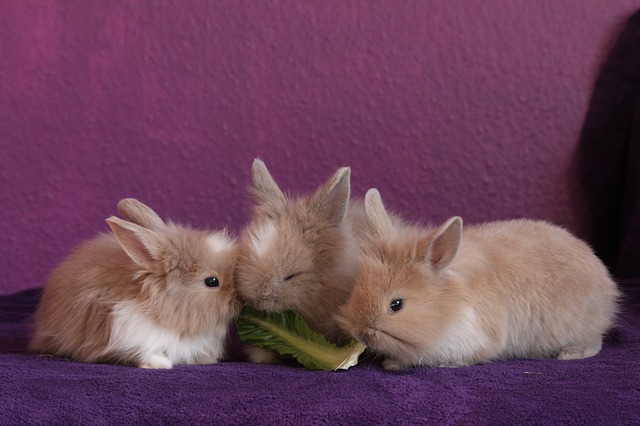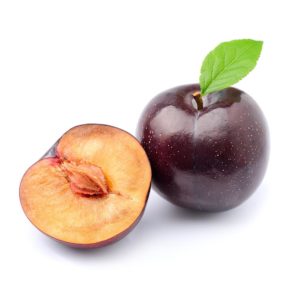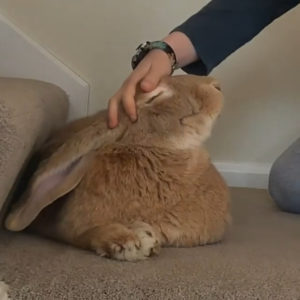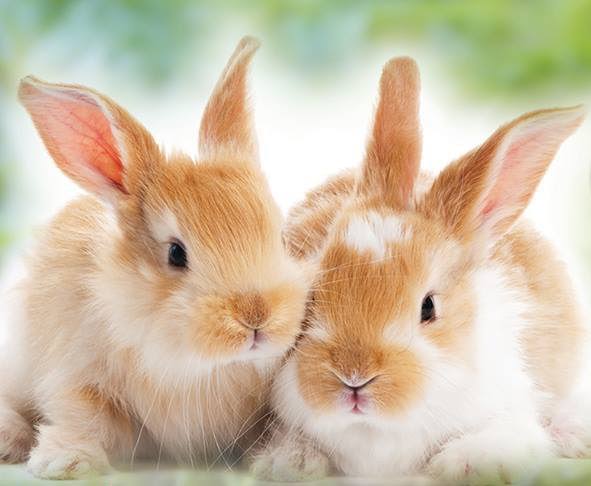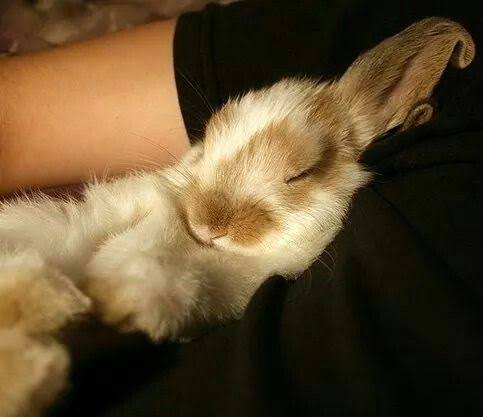Handling or interacting with rabbits the wrong way can easily scare or hurt them. In such cases, a pet rabbit may bite you. But there are multiple ways by which you can stop your rabbit from biting or nipping. Find out more inside.
Continue readingHow Long Do Pet Rabbits Live? Rabbit’s Average Lifespan?
Pet Rabbits Are Excellent House Pets That Can Live For Over A Decade. When Treated With Love & Care They Thrive. Find Out More About Rabbit Lifespan Inside!
Continue readingThe Balanced Rabbit Diet Guide – Feeding Rabbits Simplified
Have you ever wondered “What all can my pet rabbit eat? What is the best diet for my pet rabbit?” In the US pet rabbits are considered one of the popular pets closely following dogs and cats. Yet, most pet owners know very little about them.
The first major difference that set pet rabbits apart from dogs or cats is their diet. Rabbits are Obligate Herbivores which means that they can only consume a plant based vegan diet. This means that unlike cats or dogs they can’t be fed canned food plus you must have access to a mix of fresh fruits, vegetables and hay throughout the year.
The ideal diet for pet rabbits is a mix of rabbit pellets, hay and fresh vegetables and fruits.
There are also some Rabbit owners who like to feed a The Pellet Free Diet which may work for certain rabbits but the standard diet and its components are discussed in more detail below.
Rabbit Pellets
Rabbit Pellets are commercially manufactured food pellets specifically developed for rabbits. These are made from of a variety of materials including hay, vegetable products and grains. Any good brand of rabbit pellets is fine as long as it has a high fiber content, minimum of 18-20%.
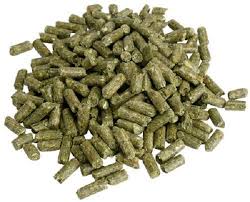
Make sure that the rabbit pellets you choose for your bunny provides a good mix of nutrients like protein, vitamins and minerals essential to a rabbit’s well being.
Keep in mind that the pellets you give to your rabbits are fresh, anything older than 6-8 weeks is no good as pellets may develop molds even if they are kept air tight.
The right amount of pellets for your bunny will keep them well fed and provide the nutrients your bunny needs to grow up and stay healthy.
Remember to not use pellets as treats as your bunny may develop a habit of eating to many pellets and begging for them. Pellets are nutrient dense and may cause obesity if given too much.
How much pellets should I give to my rabbit?
As rabbits get older they tend to become less active therefore their caloric requirements also decrease. That means as your rabbit gets older you need to reduce the mount of pellets in their diet bit by bit.
You should give less and less pellets to a bunny the older they get. Pellets should never be more than 10-20% of your rabbit’s diet.
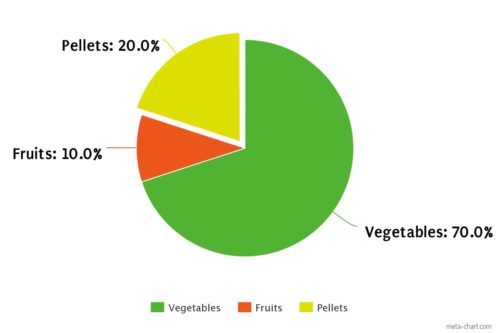
This is essential to keep your bunny from getting obese. You can find a more detailed guide in my post How Much Pellets Does A Pet Rabbit Need At Every Age?
Which brand of rabbit pellet should I give to my rabbit?
The brand of rabbit pellets you choose will depend on what is available at your location.
Some good brands to consider are
Oxbow Animal Health Bunny Basics Essential is available for both young and adult rabbit. This one is would be my recommendation. Please check it using my affiliate link on Amazon.com
Kaytee Forti-Diet Pro Health provides a good chunk of discount on a subscription. Give it a look on Amazon.com
- Supreme Selective Naturals I like this one because its grain free. Available on Amazon.com
Rabbit Hay
The most important part of the rabbit diet is hay. Rabbit hay should be the largest part of your bunny’s diet make up more than 60-70% of their total food intake.
Rabbits have quite a complicated digestive system that needs lot of fiber to keep stuff moving. Hay is also a good food for them to chew throughout the day and wear out their teeth as they keep growing throughout their life.
Placing some hay on top of your rabbit’s litter box will also help you to litter train them as rabbits like to chew on some hay as they are going to the bathroom.
Some breeds of rabbits with thick or long fur can also get hairballs, hay can also help to pass them.
What kind of hay should I give to my rabbit?
Rabbits need different hay during different stages of their growth. For very young rabbits up to 12 weeks old, alfalfa hay is the best it contains high level of protein which is essential for their growth.
For rabbits older than a year timothy hay, orchard hay, oat hay and fresh cut grasses are better as they contain less calcium which in large quantities is bad for their kidney health.
Make sure that the hay you give to your bunny is as fresh as possible. Fresh hay should smell like fresh cut grass and should not have any off smells. To keep your hay fresh for longer store it in a container where air can pass over it. This will help keep the hay dry and prevent any molds from growing.
How much hay does my rabbit need?
Well, that depends. Rabbits come in all shapes and sizes plus hay does not really provide a lot of nutrients to your bunny. I would recommend that you give your adult rabbits more hay than what they can finish each day.
A good estimate is to have a bundle of fresh hay on hand every day that is as big in size as your bunny. This will ensure that your rabbit is getting the freshest supply of hay every day and very little hay is being wasted.
Are there any alternatives to hay for rabbits?
The best alternative for store bought hay would be fresh growing grass, this is ideal for bunny rabbits but we must ensure that there are no chemicals like fertilizers or pesticides applied on that grass.

If you have a lawn where fresh green grass is growing, you may choose to let your rabbit graze on it. Trust me this is one of the best treats that you can give to your rabbit.
PS – do not leave your bunny unattended in the lawn, rabbits have been known to jump as high as 6-7 feet and can easily escape from your fence. You should also be wary of predators like dogs, cats or large birds of prey.
Fresh Vegetables & Fruits
This is definitely the most challenging part of feeding a pet rabbit. Bunnies depend on a selection of fresh vegetables & fruits to meet their macro and micro nutrient requirement everyday.
Depending on where you are in the world, the availability of vegetables in your local market may vary hugely. This makes it really hard to know what vegetables are suitable for feeding to a rabbit and what is not.
But worry not, we have you covered. Here is our exhaustive list of the best vegetables & fruits to feed your pet rabbit.
Some Leafy Vegetables That Rabbits Can Eat
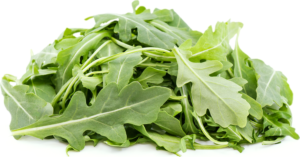
Arugula
Arugula is quite a common vegetable. It can be given to your pet rabbits daily. It is quite similar to Radish, Kale & Cabbage. Although it has a peppery-bitter taste most rabbits I’ve known will happily eat it.
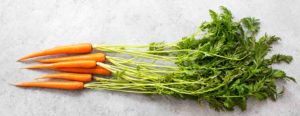
Carrot Tops
As you might know, rabbits do love carrots as much as Bugs Bunny, so if you are feeding carrots which come with the tops then your pet rabbits will love to eat the tops. They have a good amount of Vitamin C as well.

Cucumber Leaves
Cucumber leaves are also a good choice when it comes to feeding your rabbit. They have a high water content so bunnies will chow down on summer days. They do have a velvety surface which may irritate some rabbits.
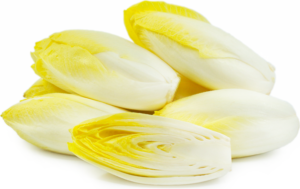
Endive
Endive is a leafy vegetable similar to lettuce. Although it is somewhat bitter in taste, some rabbits do prefer to eat it. All parts of this of this vegetable is suitable for rabbit consumption. It can be given to pet rabbits daily.
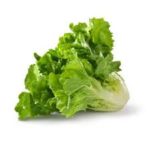
Escarole
Similar to kale in taste and texture, pet rabbits love to chow down of Escarole. This vegetable is quite leafy and contains a fair amount of Vitamin A & C. This can added to your bunny’s daily diet.

Frisee Lettuce
Although called lettuce, Frisee is more closely related to vegetables like Endive. They have a similar taste but their leaves are curled and look like fern fonds. They are crisp when fresh and very healthy for rabbits.
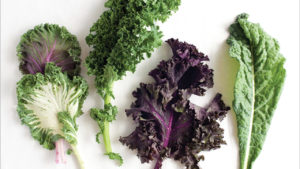
Kale
A staple of rabbit diets everywhere. All varieties of Kale are ideal rabbit food. They have high nutrition value and offer add a good amount of iron and vitamin c to your rabbit’s diet. Can be fed daily.

Mache
A soft and small leafed vegetable, Mache can become a regular part of a rabbit’s diet. It has a distinct nutty flavor which some rabbits may really enjoy.
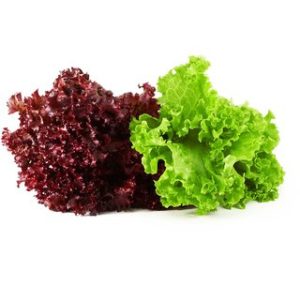
Red Lettuce or Green Lettuce
This is a vegetable that is commonly found in most supermarkets around the world. It is high in water content and has a neutral taste which rabbits like. It can be given to pet rabbits daily.
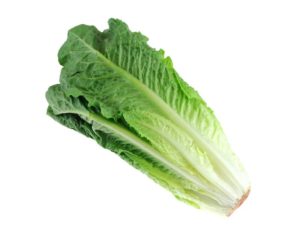
Romaine lettuce
Romaine lettuce is another leafy vegetable that you can give a pet rabbit every day. Its readily available and cheap.
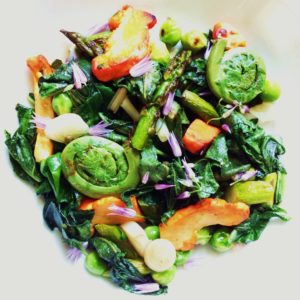
Spring Greens
They are similar to vegetables like cabbage, perfect addition to most rabbit diets. They can be fed to pet rabbits daily without worry.
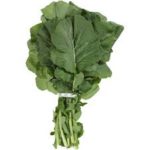
Turnip Greens
These are highly nutritious, they contain a good amount of sodium, potassium & magnesium. All of these nutrients are very important for your rabbit’s brain development and nerve function.
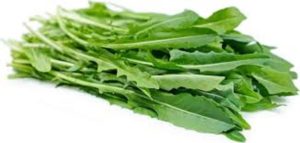
Dandelion greens
All parts of the Dandelion plant are edible to rabbits. Most rabbits will happily chow down on these plus they contain Vitamins A, C & K.

Mint
A common herb found throughout the world, some rabbits love mint other may straight out refuse to eat it. It is said that it helps with bowel problems in rabbits. Any variety can be added to a pet rabbit’s daily diet

Basil
An excellent source of essential nutrients like Vitamin K, Iron & Manganese. Most rabbits love basil. Most varieties are perfect fine for the consumption of pet rabbits.

Watercress
Watercress can be found around the world and is a very good addition to pet rabbit’s daily vegetables. It is high in Vitamin A & C.
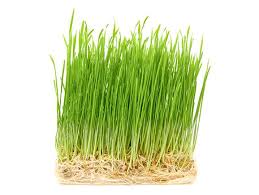
Wheatgrass
Wheatgrass can easily be grown in your kitchen counter in house. High in nutrients and antioxidents it be given to pet rabbits daily.

Chicory Leaves
Chicory leaves can be a great source of rare micro nutrients like Thiamin, Niacin & Zinc. Adding Chicory leaves to a bunny’s diet is said to increase their appetite.

Raspberry Leaves
These leaves are soft and an excellent addition to pet rabbit’s diet. Although hard to find in the markets. They are said to be high in Antioxidents and Vitamins. 
Cilantro
A very common herb that grows around the world, they a fragrant and can help encourage rabbits into eating if they don’t have an appetite. It can be given to pet rabbits daily.
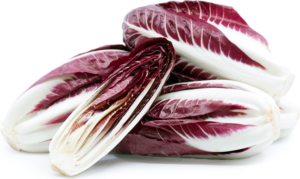
Radicchio
Unlike the name Radicchio is leafy vegetable similar to cabbages. They contain high amount of micro nutrients like Zinc, Copper & Anthocianins which promote heart health in pet rabbits.
Bok Choy
This vegetable is filled with Vitamin C, E & Beta Carotene. It also contains high amount of the mineral Selenium which is quite good for a bunny’s skin and fur.

Fennel
Both Fennel bulbs and leaves contain high amount of Vitamin C & Manganese which are really good for pet rabbits.
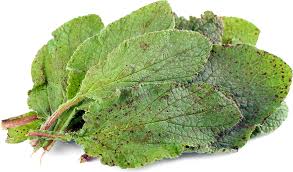
Borage leaves
Another rare but quite nutritious vegetable. Borage leaves help reduce inflammation in pet rabbits as well as promote kidney health.
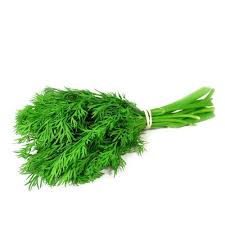
Dill Leaves
A common herb, Dill leaves are rich in antioxidants and a good source of vitamin C, Magnesium, and Vitamin A. They also promote heart health in pet rabbits.
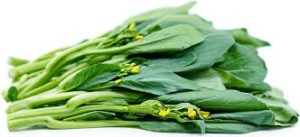
Yu Choy
This leafy green vegetable is a good source of Vitamins B,C and Minerals. Can be easily included in a bunny’s daily diet.

Parsley
A common herb, Parsley contains Vitamins that help with rabbit’s bone & eye health. But, it also contains high level of Oxalic Acid which can cause kidney problems in rabbits. Parsley should not be given to rabbit more than once or twice a week.

Spinach
Called a super food, Spinach contains high amount of nutrients like Iron which play a key role in maintaining healthy blood cells. But it also contains high levels of Oxalic Acid so it cannot be fed to rabbit more than once or twice a week.

Mustard Greens
Mustard Greens are rich with heart & bone healthy nutrients such as Vitamin K and Folic Acid. Some rabbits quite enjoy the peppery taste of Mustard Greens but the contain Alkaloids therefore should only be given in small qualities a few times a month at the max.
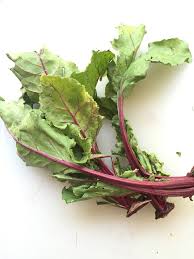
Beet greens
Beet Greens are dense with lots of healthy nutrients like Iron, Calcium, Copper and Vitamin K but these too are high in Oxalic Acid. They can only be given to pet rabbit just once or twice a week.

Swiss chard
Swiss Chard can be a great source for Vitamins K,A & C. They can be included in a rabbit’s diet a couple of times a month but no more due to its high Oxalic Acid content.

Radish Tops
If your radishes come with their tops then you can definitely give them to your rabbit in small quantities a few times a month due to their Alkaloid content.
Some Non Leafy Vegetables That Rabbits Can Eat

Carrots
I have never seen a rabbit that does not love carrots. They are densely packed with nutrients like Vitamin A as well as lots of Carbohydrates and Fiber. A bit of carrot can be added to a rabbits daily diet but too much is known to cause obesity. Moderation is key.

Celery
Celery is a great vegetable for pet rabbits. It has high water content and rich with Vitamins. All parts of Celery can be given to rabbits daily.
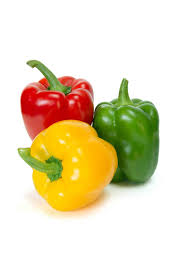
Bell Peppers
All varieties of Bell Peppers are safe for rabbits to eat but you must remove their stalks and seeds first as they might be spicy or bitter. Only a small quantity of Bell Peppers is recommended as it could be difficult for rabbits to digest to much.
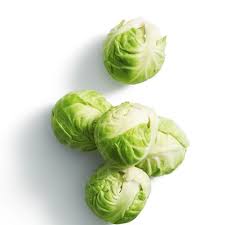
Brussel Sprouts
They are another great option for pet rabbits as they are high in Fiber & Fat content but only a small amount must be given as these too are hard for rabbits to digest.

Cabbage
All colors and varieties of Cabbage can be fed to pet rabbits. In some rabbits Cabbage can cause gas and digestive issues so only a moderate amount may be given to your bunny.
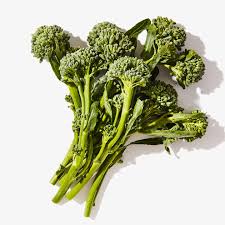
Broccolini
Both the stems and heads of Brocolini can be given to pet rabbits in small quantities. They are rich with Vitamin A, Iron & Folates which promote blood health in Pet rabbits.
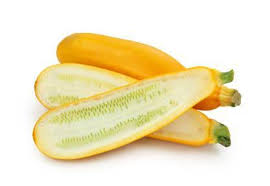
Summer Squash
Also known as Yellow Squash, this vegetable is jam packed with lots of different nutrients such as vitamins A, B6, C, riboflavin, phosphorus, and potassium. Since it has a high water content it is known to cause soft stools in rabbits so only give a small amount of Summer Squash to your rabbit after removing the center which contains the seeds.
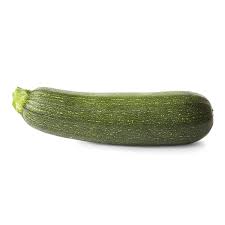
Zucchini
Zucchihi is quite similar to a squash and is high in water content. It is good for digestive health in rabbits. A small amount after removing the center seeds can be fed to rabbits.
Cucumber
Cucumbers are rich in minerals as well as dietary fiber. They are a low calorie choice for a rabbit’s meal but be careful of overfeeding as it can cause soft or runny stools.
Some Fruits That Rabbits Can Safely Eat Are :-
Apple
Apples are rich in Vitamin C & K plus it contains lots of Dietary Fiber which is quite helpful for rabbits. The seeds and stem must be removed as inedible. Rabbits can eat both red and green apples.
Cherries
Cherries are another fruit that some rabbits adore. It is a good source of vital minerals like Potassium, Copper & Manganese.

Pear
Pears are another great fruit to add to rabbits diet. They are rich in Vitamin C and contain quite a bit of dietary fiber. It can be given with the peel to rabbits if they are organic.
Peach
Packed with anti oxidants & rich in minerals. Most rabbits love the taste of peaches. It is also said to improve fur texture in rabbits. Just remember to remove the stones before you give it to your rabbit.
Plum
Plums are low in calories and contain lots of healthy vitamins that are good for pet rabbits. The pit needs to be removed before you give these to rabbits. Dried plums or prunes are not recommended for rabbits
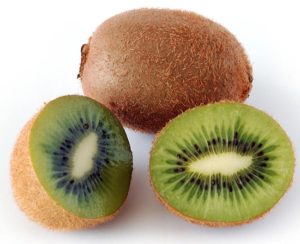
Kiwi
Kiwis also known as Chinese Gooseberries are small berries that pack a punch of tangy flavor. The contain a good amount of Vitamin K, E and Folates. Kiwis should be peeled when giving them to pet rabbits.
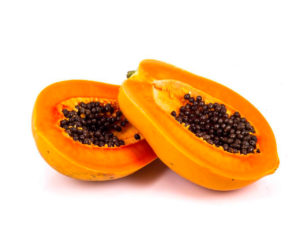
Ripe Papaya
Papayas can be given to rabbits when they are ripe. They are a good source of Potassium and Vitamin C. Papayas need to be peeled and the seeds need to be removed. Papayas are good for the digestive health of your rabbit.
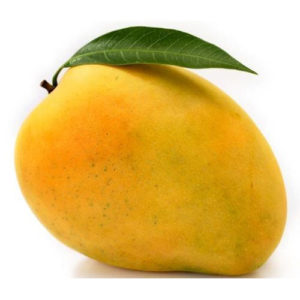
Mango
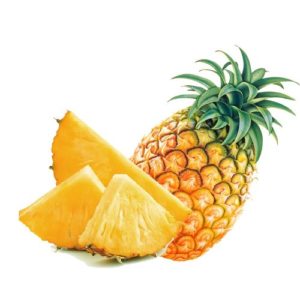
Pineapple
These are filled with syrupy juice and rabbit love them. Pineapples are a great source of Vitamin C & Manganese. The best way to prepare pineapple for rabbits is by peeling off the skin and cutting it down to thin slices.
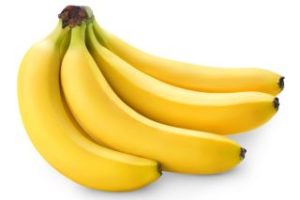
Banana
This is the universal favorite fruit for all rabbits. Bananas are rich in Vitamin B6 and lots of other nutrients. Rabbits adore it for its mushy texture and sweet taste. Just peel it and hand feed it to your bunny.
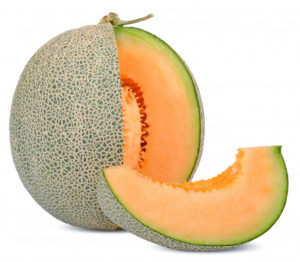
Melons
Also called called Cantaloupes are a good low calorie fruit for pet rabbits. Each cup contains only 53 calories. They are also easy to prepare, just peel the skin and chop into slices.

Watermelon
Made mostly of water, watermelon is an ideal fruit for pet rabbits. They are incredibly easy to slice up and very low calorie. Although Rabbits can eat all parts of watermelon safely, seeds and skins. It is best to just remove the skin.
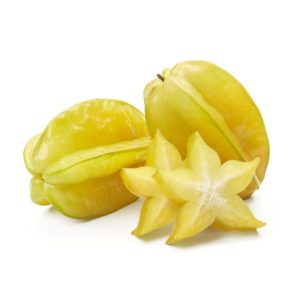
Star Fruit
High in Vitamin C & B5, Starfruits are amazing because there is no prep required to given them to rabbits. Just slice it if you want or you can just give it whole.

Apricots
Apricots are great for pet rabbits because they are low in calories and contain many micro nutrients. I can be given to rabbits with the peel but the stone (seed) must be removed.
Nectarine
Nectarines are a great source of Potassium and Beta Carotene which are essential nutrients for pet rabbits. You can give nectarines to pet rabbits with the peel on or without.
How Much Vegetables & Fruits Does My Rabbit Need?
Vegetables and fruits are an essential part of a rabbit’s diet. Since hay which has very little nutritional value makes most of the bulk in a rabbit’s diet, rabbits depend on vegetables and fruits to fulfill their micro nutrient needs.

About 70% of your rabbit’s nutrients must come from vegetables. This cannot be skipped or adjusted in a healthy rabbit diet.
Water
Just like us humans, bunny rabbits need to drink water to live. Compared to other animals their size, rabbits tend to need more water. An adult bunny should be drinking 1.5 to 5 ounces per 2.2 pounds or 50 to 150 ml/kg by body weight.
Provide as much water as you rabbit and change it everyday. Give your bunny the same kind of water you are drinking, whether it is filtered tap water or packaged.
Bowl vs Bottle For Rabbits?
Even though drinking from a bowl is much more natural for a rabbit, we all know that they love to toss their bowls and spill the water.
That’s why it is more convenient for your rabbit to drink out of a water as it creates much less mess in their enclosure.
But remember, you cannot give the bottle to your rabbit right away. Drinking from a bottle is a skill your bunny has to learn.
Start out by giving them both the bowl and the water bottle as your teach them how to drink.
Lean more on my post on How To Train Rabbits To Drink From A Water Bottle?
Treats
Lorem ipsum dolor sit amet, consectetur adipiscing elit. Ut elit tellus, luctus nec ullamcorper mattis, pulvinar dapibus leo.
Catagories
- New To Rabbits (16)
- Rabbit Behavior (9)
- Rabbit Care (18)
- Rabbit Diet (12)
- Rabbit Facts (10)
Can I Get COVID 19 From Pet Rabbits?
If you are asking if you can get the Covid-19 Corona virus from Pet Rabbits then the quick answer is: Very Unlikely.
But let me explain…
The Covid-19 Pandemic of 2020 has disrupted all of our lives. As it stands of now this disease has brought almost all countries of the world and has brought everything to a standstill. It has completely changed everything we knew about home, work, social life, and even our relationship with our pets.

Owners and pet shelters are having trouble keeping up with their need for pet supplies. There are reports of a global shortage 0f most pet supplies. The most unfortunate part is that some people are being influenced by hoaxes and are abandoning their pets in fear that their pet may infect them with coronavirus.
Here is what the data says:
In the US multiple tigers and other big cats have tested positive for COVID 19, experts at CDC believe the Tiger may have contracted the disease from one of its caretakers who was also infected. Some cats and dogs have also been found to be COVID positive from other places in the world. In the lab, it was also found that some ferrets, rats, and mice were also able to contract the disease as well as cats and dogs.
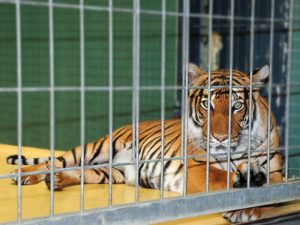
Scientists have also observed that cats and ferrets have been able to transmit the disease from them to other members of their species. Therefore there is a chance that cats (wild and domestic), dogs as well ferrets
However, there have been no cases of COVID 19 coronavirus infection in pet rabbits. Similarly, most other pets are also deemed safe as very few cases of pets being infected have come up since the start of the pandemic said the CDC.
So, how can we prevent our pets from getting the coronavirus?
The World Health Organization has further advised that all pet rabbits and other pets or farm animals should be kept away from a person infected with COVID 19. Stricter hand hygiene should also be maintained when handling your animals, their food, cages, etc. If you are still wondering “Can I get The Covid-19 Corona virus From Pet Rabbits?” then learn more from the WHO advisory on COVID 19 in pet rabbits here.
Learn more about other common pet rabbit diseases and let us know how you are staying home with your pets in the comments below.
What Are Male, Female And Baby Rabbits Called?
Did you know that male, female, and baby rabbits all have different names?
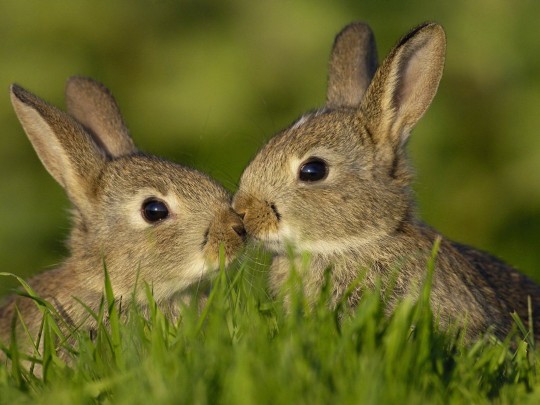
Male bunny rabbits are called Bucks (Singular: Buck) and Female Rabbits are called Does (Singular: Doe)
This name was borrowed from other woodland creatures like deer and reindeer as in the wild these animals share their habitat with rabbits.
Now you might ask What Are Baby Rabbits Called?

Baby Rabbits are called Kits (Singular: Kit)
This is a reference to the word Kitten because baby rabbits and kittens do look quite alike. Their behavior is also similar to that of baby cats. To learn more about rabbit behavior check out our article on the topic.
Biggest Pros & Cons Of Having A Pet Rabbit
Pet Rabbits Are Really Different From Other House Pets Like Cats Or Dogs. Here Are The Pros & Cons Of Having A Pet Rabbit And Who Should Get A Pet Rabbit!
Continue readingRabbit Behavior & Body Language Cheat Sheet For Beginners
If you are getting into raising rabbits or have pet rabbits for some time now then being able to learn and understand rabbit behavior is really important to you!
Rabbits are voiceless creatures and often rely on a mix of body language and behavior to communicate with their owners as well as other rabbits. Understanding your pet’s body language will not only help you understand how it is feeling and its mood but may also save your pet bunny’s life as you may be able to better understand if your rabbit is sick or in pain.
Here is a comprehensive guide to all types of rabbit behavior and what it all means!
1. Content Rabbit Behavior
These are the behaviors you might see in your rabbit when it is really content and satisfied with life and is going about its day worry free. Some common content rabbit behaviors are explained below.
Sniffing
Rabbits have very sensitive noses and weak eyes so they use their sense of smell as their primary source of exploring their environment. Rabbis usually sniff everything they come in contact with.
With their sense of smell they can easily differentiate between different people and other rabbits and this sense really helps them to identify their food or pheromones of other rabbits while mating.
Chewing
Rabbits are curious creatures, chewing is a way for rabbits to taste and explore their surroundings. It is very relaxing for your rabbit when it is chewing on something it likes.
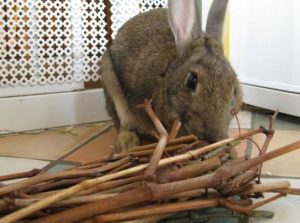
Rabbits like to chew on all sorts of things so it is very important that you provide it with plenty of things to chew like hay or twig toys so that it does not focus its chewing on your cloths or furniture.
Digging
Digging is a very natural behavior for pet rabbits as in the wild rabbits tend to make burrows in the ground to live and raise their young.
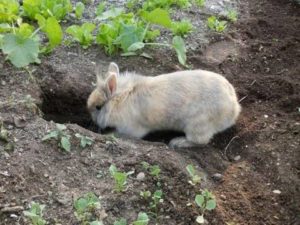
More often then not, digging can be seen as a playful behavior. Rabbits feel right at home while digging and it relaxes them and help them to relieve stress. So its best to keep them occupied with some cardboard boxes or old rugs which they safely dig on.
Eating
A rabbit eating happily is one of the most adorable things in the world. Rabbits love to eat get a mood boost when given food by its owners.
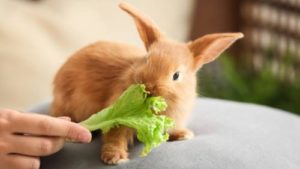
Your rabbit eating and drinking is one of the most important behaviors you must keep an eye out for. Rabbits are fragile creatures and the biggest reason for rabbit deaths in the US is a gut blockage. While it is treatable, a quick intervention often gives the highest chance of recovery.
So if your rabbit is not eating or drinking, it may be a sign that something is wrong with its health. Learn a bit more about the best foods to give to your rabbit you can check out our article on What Can Rabbits Eat? The Best Pet Rabbit Diet!
Laying Down
Loafing
Loafing is a resting position for rabbits where they tuck in their arms and legs under their body. Since they look like a loaf of bread in this position, it has been named loafing by the rabbit community.
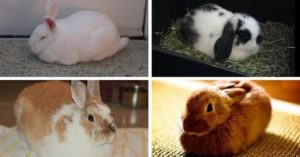
Loafing is also a sign of a content rabbit that feels comfortable resting around you. Some rabbits also like to sleep in this position while some do not.
So if you see that your rabbit does not sleep at all but is always sitting in the loaf position then worry not, rabbit can sleep very well while loafing.
Stretching
Rabbits love to stretch their body after laying down or sleeping for a while. They usually stretch their body by placing their forearms in front of their body and stretch their whole body out.
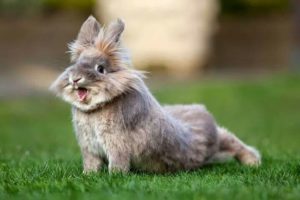
They may do this multiple times and this may be accompanied with a bit of yawning and shaking their body.
Shaking
Again this is something very normal for rabbits. They will shake their whole body from head to their butts. This is something rabbits will do after grooming or after laying down for a while.
This is done to shake off any dirt or parasites that may have crept on their fur while they were resting. This also helps to fluff up their fur which helps them to deal with the cold.
Plus it looks really adorable!
Yawning
This one is pretty self explanatory, rabbits like to yawn just like any other animals or us humans. This can usually be seen just after they have woken up from sleeping or while they are stretching.
Sleeping
This a rabbit’s favorite pass time. Rabbits like to sleep in batches, they usually do not sleep throughout the day. Since rabbits are prey animals, they are quite weary about their sleep and tend to only sleep soundly where they feel really safe.
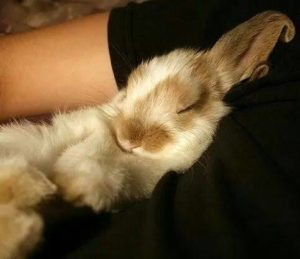
Rabbits also have the ability to sleep with eyes open so just because your rabbit has their eyes open while resting does not mean they are not sleeping.
Rabbits prefer a quite environment while sleeping to feel safe. Remember their ears are hundreds of time more sensitive than ours, therefore keeping your rabbit in a very noisy environment may effect their health due to lack of peaceful sleep.
Grooming
Rabbits are neat freaks, they like to groom and clean themselves all the time. You would be surprised to learn that rabbits groom themselves much more than cats do.
This extensive grooming routine has made rabbits into one of the cleanest house pets. Rabbits don’t have any body odor either, all due to their impeccable grooming habits.

Grooming is also a sign of a happy, healthy and content rabbit, so enjoy watching your rabbit groom itself as they look adorable doing it.
Nudging
You may have seen your bunny nudge things with its face sometimes, this nudging is a way for rabbits to explore and feel their environment. Rabbits may also nudge something or someone if they are in its way.
So nudging is not at all an aggressive behavior at all, its just a way for them interact with their environment.
Nipping
Nipping is also a way for rabbits to communicate with each other and their owners, typically it is much softer than a bite and feels like a pinch.
Again this nipping behavior is also a way for rabbits to interact with their environment, some rabbits do nip more than others. Rabbits tend to nip when they are bonding with other rabbits or when they are trying to get the attention of their owners.

In case a rabbit is nipping to hard and it is hurting you then you may want to check out our article on How To Prevent Your Rabbit From Nipping & Biting
Panting
Rabbits sometimes tend to pant when they get tired from a lot of physical exercise. This is completely normal and nothing to scared of, they are just trying to catch a breath and rest a bit.

This is also a way for rabbits to regulate their body heat as they cannot sweat to cool down.
Pinned Ears
Although pinned ears is often a sign of aggression for rabbits, it may not be the case every time. Some rabbits just like to pin their ears in and rest or sleep.
It is also something that you may never observe with rabbit with large ears like lops, so just don’t worry about it.
Raised Tail
Again, the raised tail is seen as a sign of aggression under most circumstances but it is also something that all rabbits do just before going to the bathroom.
Some rabbits may just sit around with a raised tail, so this one is very situational.
Running
Running is something that all rabbits love to do, most often rabbits will run around in a playful manner. This is also excellent exercise for you bunny so provide them with plenty of space to hop and run around.
Scratching & Itching
Again this is a very normal behavior for your bunny. Rabbits will scratch all over if they have an itch or while grooming.
They usually scratch with their hind legs and then lick their toes to check what they have scratched out. This helps them identify if they have scratched out a parasite, this is one of the traits that help rabbits stay so clean and tidy.
2. Happy Rabbit Behavior
These are the behaviors you will see in your rabbits when they are really happy and excited. These behaviors indicate that your rabbit is having a wonderful life and bonding with you really well.
Begging
All bunnies love treats, especially when you hand feed it to them. That is why you will often see your rabbit stand up on its hind legs and beg for treats from you.
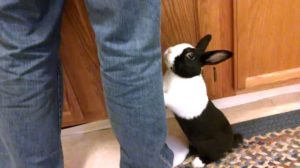
Rabbits only do this when they are excited and happy. When your rabbit is begging it is best to give them a treat or two but remember that too many treats may make your rabbit obese and that can be life threatening for bunnies. So treats must be in moderation.
Binkying
This is one of the best things that rabbits do when they are really happy, they bounce in the air shaking their body from head to tail. This behavior is called a binky.

Some rabbits like to binky more than others and the binkys could be accompanied with fast running and hopping around! So if you want your bunny to binky around then make sure it has enough open space to do it safely.
Circling
Rabbits often like to circle around their owners or other rabbits, this if often considered a hormone driven sexual behavior but if your bunny is spayed and neutered then it more likely it is because your bunny is really happy to see you and wants your attention especially if it is expecting food from you.
You may also see them circling other rabbits as well, this means that your bunny is in a happy and playful mood.
Cuddling
This is pretty much self explanatory, if your rabbit is cuddling with you or its bunny friends then it means that it is very happy and feeling comfortable living with you. Pet rabbits are very affectionate so if they cuddle with you it means that you have their trust and your bunny considers you a true friend.

Be aware that rabbits do not stay still for long so if the suddenly jump up and leave while cuddling that does not mean that your bunny does not like cuddling with you.
To get your rabbit to cuddle with you more, try laying down on the floor and let your bunny come to you first instead of picking them up. This method will help raise your bunny’s confidence and help you bond better in the long run.
Bunny Flop
This is one of the most adorable things that bunnies do, one second they can be running at 500 miles per hour and the next second they tumble over. This is called the bunny flop. Rabbits are really happy and content if they are flopping around as rabbits are prey animals and they need to feel very comfortable in your house and with you to flop over.
Sometimes bunny flops can be a bit scary as the first time I saw one of bunnies flop I was sure that she was dead but rest assured, this is just a way for them to rest or express their happiness.

Also, be aware that some bunnies flop more than others and some don’t flop at all. Just because your rabbit does not flop as much does not mean that they are not happy. They may express their happiness in other ways.
Honking
Honking is a kind of sexual behavior that is often displayed by male rabbits during mating time but rabbits can honk at other times as well.
Some bunnies will honk while you pet them, its like a sign of appreciation.
Tossing & Carrying Things
Rabbits love tossing things around, they love to toss things as a sign of play like tossing their toys or their bowls. They may also sometimes toss stuff to move them out of their way.
Bunnies will also carry things in their mouths and run around, they do this take a toy or treat away from you or another bunny.
Rabbits will also toss stuff when they are angry or agitated but this is very rare.
Submitting To Be Pet
Asking to be pet is a sign of great happiness and a strong bond for rabbits. Rabbits do this by lowering their heads to their ground. They also do this when they want to be groomed by another rabbit.

If a rabbit submits to be pet then go ahead and pet it but my advice would be not to pick up the rabbit while petting. Rabbits are prey animals, they get spooked easily and generally dislike being picked up as they feel they are being snatched away by predator so they might come to hate it.
After a while this leads the rabbit not submitting to be pet anymore. So gently does it.
Tooth Purring
This behavior is unique to rabbits where they will lightly grind their teeth when relaxing or being pet by you. This behavior is similar to that of cat purring but does not sound alike at all.
The sound that rabbits makes while tooth purring is like chewing and they will often move their jaws from side to side as well while lightly grinding their back teeth.
Rabbits only tooth purr when they are extremely satisfied and happy. So if your bunny is tooth purring then its a sign that your rabbit loves you.
Licking
Rabbits lick humans and other rabbits as a sign of affection, you’ll know what a lick is so not much to explain here.
Rabbits don’t spread any diseases to humans either therefore its perfectly fine if the lick you, bunnies are really clean and don’t smell either.
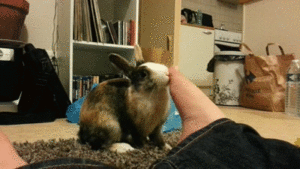
But I have had some rabbits that have never licked anyone so its not something that all rabbits will do. The best way to get your rabbit to lick you is to put your hand in front of their mouth while petting then and they will most likely lick your hand.
If not, keep trying. It feels great!
3. Fearful Rabbit Behavior
Up next are the behaviors you will see in rabbits when they are fearful or unhappy. As rabbits are prey animals, the get spooked quite easily so its recommended to keep your rabbit away from things that scare them.
Alert
When rabbits hear, see or smell something unknown or interesting they will often get into alert mode perking up their ears straight above their head and completely wide-eyed.

As rabbits are prey animals, when something spooks them rabbits try to carefully watch and listen for any threats.
Curious
Rabbits have quite poor eyesight, their eyes are to the side of their head so they have a blind spot just in front of them. That’s why rabbits bob their heads to get a better look at something they find interesting or while exploring a new area.
Sometimes when rabbits encounter an unfamiliar object or area you will often find them creeping by extending their head forward and bobbing their head down and up. This is a completely normal behavior and it means that you have an active and curious rabbit.
Rabbits sometimes also tilt their head and try to see with one eye, this helps them focus onto the object they want to see and helps their vision.
Panting
Panting heavily can be a sign of fear. When rabbits are in scary situations like when someone picks them up or if they are in a car, they can pant and hyperventilate.
Screaming
Although rabbits are not very vocal animals, they can actually scream loudly when they are in extreme pain or scared to death. This is very rare but can be seen sometimes in younger rabbits if you try to pick them up.
Hearing a rabbit scream is very disheartening as they only scream when they feel like they are going to die.
Going Limp

Once again, when are rabbits are very scared they get into this submissive position when you can do whatever you want with it but it won’t run away. This is like submitting yourself to fate kind of behavior. If your rabbit goes into this kind of a scared state due to some reason then its best no to meddle with them for some time and giving them a treat also helps to calm them down.
Thumping
When scared or annoyed rabbits will often stomp the ground with their hind legs. This makes a thumping noise, this behavior is most likely to alert other rabbits of anything scary that they have seen on heard.
Some rabbits will also thump when they are irritated or angry with their owners or other pets.
4. Aggressive Rabbit Behavior
Rabbits are highly social animals and as such can display a host of aggressive behaviors to convey their anger or irritation to other rabbits and their owners. The best way to coexist with your pet bunny will be to understand these behaviors and take up appropriate action.
Biting
Rabbits will sometimes bite their owners or other rabbits when they are really angry or if the others are doing something that the rabbits absolutely hates. A rabbit can bite someone for anything from picking them up, giving them medicine, grooming or clipping their nails.
Some bunnies may bite other rabbits as well especially if you are housing rabbits together which are not bonded or if the rabbits are displaying sexual aggressiveness.

Biting behavior can be different from rabbit to rabbit depending upon their personality. Some rabbits bite a lot and some don’t bite at all. They may be a difference in the force of the bite as well, some bits may be painless while some can cut the skin.
If you have a rabbit that bites a lot then you need to train it so that it understands that biting is bad behavior. You can learn more about stopping your rabbit from biting here.
Boxing
Boxing is something that rabbits do when they are angry and want to fight, they lunge with their front feet onto another bunny or at their owner’s hand. This behavior is often driven by anger or sexual aggressiveness and can be reduced a significant amount if your pet feels safe near you and if spayed or neutered to prevent hormonal imbalances.
Bunny Butt
The bunny butt is something that rabbits will do when they are irritated, they often turn their back towards their owners and peek from the side of their face.
This is also a behavior that domestic rabbits have inherited from their wild cousins, they do this to have a quick exit in case something bad happens so they turn away from the thing they find scary or annoying and keep peeking in case they need to make a getaway.
Charging & Lunging
As rabbits are social animals, they sometimes show aggression towards their owners or other rabbits by charging or lunging at them when they are very angry or irritated. This behavior is also seen while bonding two rabbits and this is also seen during territorial aggression. Rabbits sometimes also charge other pets like dogs or cats as well.
Again, getting your bunnies spayed and neutered helps to reduce this behavior greatly and can help your bunnies stay calm.
Chewing Aggressively
Rabbits sometimes chew agressively when they get really annoyed, you may see that your bunny chewing and rattling their cage bars or on some furniture. This behavior is really undesirable and can even be harmful to your bunny as they can hurt their teeth or gums while trying to chew on metal bars or on hardwoods or plastic.

My rabbits usually do this when they want to get out of their cage or if I am eating something in front of them and they want a bite. Although adorable its best to make sure that your rabbits are not doing it excessively.
Destructive Digging
Even though digging is a playful behavior, some rabbits also dig when they are angry or being aggressive. This may cause damage to your furniture like your sofa or bed sheets.
Although it is often impossible to stop a rabbit from digging completely, you can reduce the damage they cause by clipping their nails or distract them with a treat.
Grunting
Rabbits grunt when you are doing something to them that they don’t like, this can usually be seen when you pet them when they are just not in the mood. Rabbit grunts are a warning for you to back off as they are most likely to bite you or lunge at you.
5. Dominance Rabbit Behavior
These behaviors are often seen if you have more then one rabbit, these behaviors can be social, sexual or territorial. Getting your rabbit spayed or neutered can help reduce dominance behaviors significantly.
Chasing
When more than one rabbit is housed together you will often see them chasing each other. Somethimes only the dominant rabbit will chase the others around.
Rabbis chase each other when they want to hump or when they want to follow the other rabbit out of curiosity. Rabbits will also chase other rabbits if they really want them to get out of their area.
Chasing is a behavior that rabbits display to establish dominance among each other, therefore it is also a clue for us humans to understand the complex social hierarchy that bunnies have within a group.
Chinning
Rabbits have scent glands under their chin which release pheromones. Although these pheromones are undetectable by us humans but it is an important marker for rabbits.
Rabbits use this pheromone released from their scent glands by rubbing the bottom of their chin on objects, their surroundings or humans. It is a way for rabbits to establish their territory and identify things in their surroundings.
Humping
Humping is the natural mating ritual for rabbits. Although humping may mean an urge to mate but it could mean a lot of different things in a rabbit group.
Rabbits will hump each other to assert dominance and this could occur quite frequently during the bonding process. Rabbits will hump each other regardless of their gender. I once mistook one of my female rabbits for a male rabbit just because she was humping another rabbit.
If your rabbits are spayed and neutered them humping is less likely to occur but it still may happen. There is nothing wrong if two rabbits are humping but you should keep an eye on them and separate them if they are getting violent.
Spraying
Spraying is another way for rabbits to mark their territory. You can sometimes see them spraying their pee on walls or maybe your furniture. This behavior is more prominent in male rabbits than females.
Although this behavior is very rare in rabbits who are spayed and neutered but it sometimes can occur due to some stimulus during a bonding process or if your bunny was fixed at an older age then recommended for spaying and neutering rabbits.
6. Sick Or In Pain
And lastly, these are the kind of behaviors that your rabbit may display when they are sick or in pain. Some of these may not mean that they are really sick. But since bunnies are so fragile it is best to take extra care and monitor your rabbit thoroughly. You may even consider reporting it to your rabbit friendly vet if your rabbit is showing any of these behaviors.
Pressed Stomach
Rabbits tend to press their stomachs against the ground when they are having a stomach ache. Although this might sound harmless but remember any stomach problem is a serious problem rabbit.
The number one killer of domestic rabbits is G.I Stasis, a medical condition where food gets stuck in rabbit’s guts and they lose their apitite, stop pooping and eventually die from not eating or pain.
And a rabbit with a pressed stomach may be showing symptoms of just that. That’s not to say that rabbits do not press their stomach against the ground otherwise. That is why it is critical that we must observe this behavior carefully and always stay in touch with a rabbit friendly vet throughout this period.
Tooth Grinding
When in pain rabbits sometimes grind their teeth when it becomes really unbearable. You may often see or hear your bunny grinding its teeth as well as be in a hunched position with their stomach pressed. While it may look like your bunny is just loafing but it may not be the case.
Again careful observation is required with prompt consultation with a rabbit friendly vet is paramount.
Head-Shaking
If your bunny is shaking its head and scratching its head continuously then it may indicate that your rabbit has an ear infection.
Ear infections are a very common problem for most domestic rabbits and can often be quite painful and troublesome disease for rabbits. If your bunny is shaking their head-scratching their ears then do not wait any further. Take them to the vet, although ear infections may not be life-threatening but your bunny will thank you for coming to its rescue.
Ending Thoughts
Rabbits are small yet intelligent creatures, they all have a different personality just like us humans. They may not be able to speak or show their emotions but their body language can help you understand what they really want to say.
So give it a go, observe your bunny and let us know how many of their behaviors you were able to identify and if this guide has helped you in any way then consider supporting this blog so we can keep making awesome content about Rabbits.
Catagories
- New To Rabbits (16)
- Rabbit Behavior (9)
- Rabbit Care (18)
- Rabbit Diet (12)
- Rabbit Facts (10)
Top 10 Things To Keep In Mind Before Getting A Pet Rabbit
If You Are Thinking About Getting A Pet Rabbit Here Are The 10 Most Important Things You Must Keep In Mind. A Few Of These Might Even Surprise You!
Continue reading

